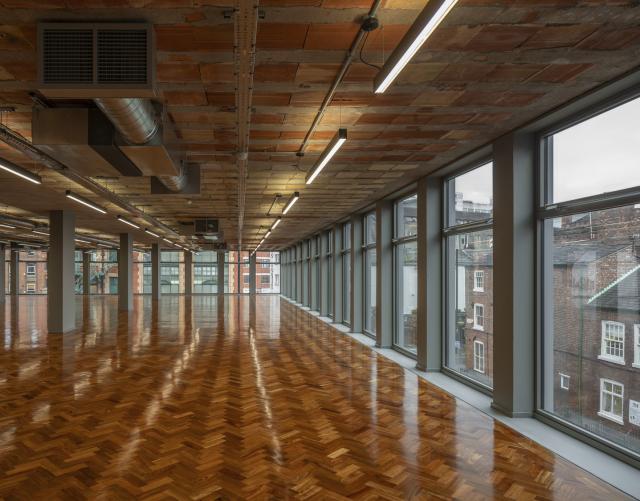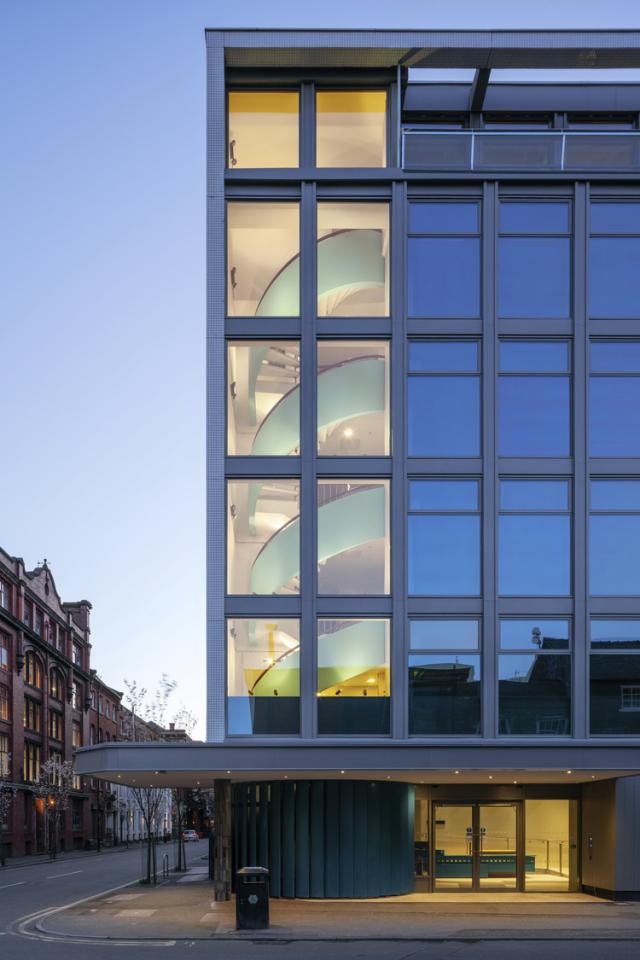
What drew you to a career in the built environment?
When it came to deciding which route I wanted to take at university, I knew I wanted to study something that would provide a strong foundation for a future career. I was also attracted to the idea that by studying something related to the built environment, I could make a tangible impact on my surroundings. I initially applied to study architecture at university, however, I found that I was more interested in the technical aspect of a design and how to make a building functional and operational, so I opted for a degree in architectural technology instead.
Now that I’m in the role, I enjoy being able to go on site, see the construction and design progress, and witness the way in which the projects I’m working on are shaping the city. Being able to walk through Manchester with the knowledge that my work has contributed in some small way to the place I live has to be one of the most fulfilling aspects of the role.
What do you enjoy most about your work?
I like that there’s always a new problem to solve. Whether that’s unpicking an issue in Revit or understanding how to make an interesting detail work, there’s always something different to learn.
I also have a strong interest in sustainable architecture and construction. In my role, I’m not only challenged to create a building that contributes positively to its surroundings in terms of form and function, but I also have the opportunity to work with colleagues and clients to develop solutions that create healthy environments and minimise negative environmental impacts. There are few other careers where I would be able to have this kind of influence.


What’s your favourite project to date and why?
I’ve been involved in a number of really interesting projects since joining Buttress, but I think my favourite would have to be Hilton House, which involved the transformation of a largely derelict 1960s, Richard Siefert designed building in Manchester’s Northern Quarter into commercial space fit for the 21st century.
I enjoyed the process of peeling back years of redevelopment to reinstate the building’s original features, such as its parquet flooring and terracotta ceiling, as well as the challenge of understanding how the space could be reconfigured to meet the needs of a modern, tech-driven workplace.
I also had the opportunity to play quite a significant role on the project and take a really hands-on approach. This included collaborating with potential operators to understand how they wanted to use the space and working with them to design elements that were bespoke to their requirements.
A crowning moment was when the project was shortlisted for an Architects’ Journal Retrofit Award in the 2,000-10,000m² workplace category, an award which recognises design, engineering and construction excellence that prolongs and improves the life of the built environment.
What do you enjoy most about working at Buttress?
As well as being an incredibly friendly, open, and honest place to work, the practice is also very progressive in terms of its commitment towards social value. It’s rewarding to know that the projects that I’m working on don’t just make a positive contribution to the built environment but can improve social and economic outcomes for the communities they serve.
There’s also a wealth of talent and knowledge within the studio. Whether it’s understanding how best to preserve a World Heritage Site to sourcing expertise in urban design, there’s someone in the studio with the insight and experience to provide informed advice. It’s fascinating to have access to this kind of resource and to have the opportunity to learn from skilled colleagues across a range of sectors.